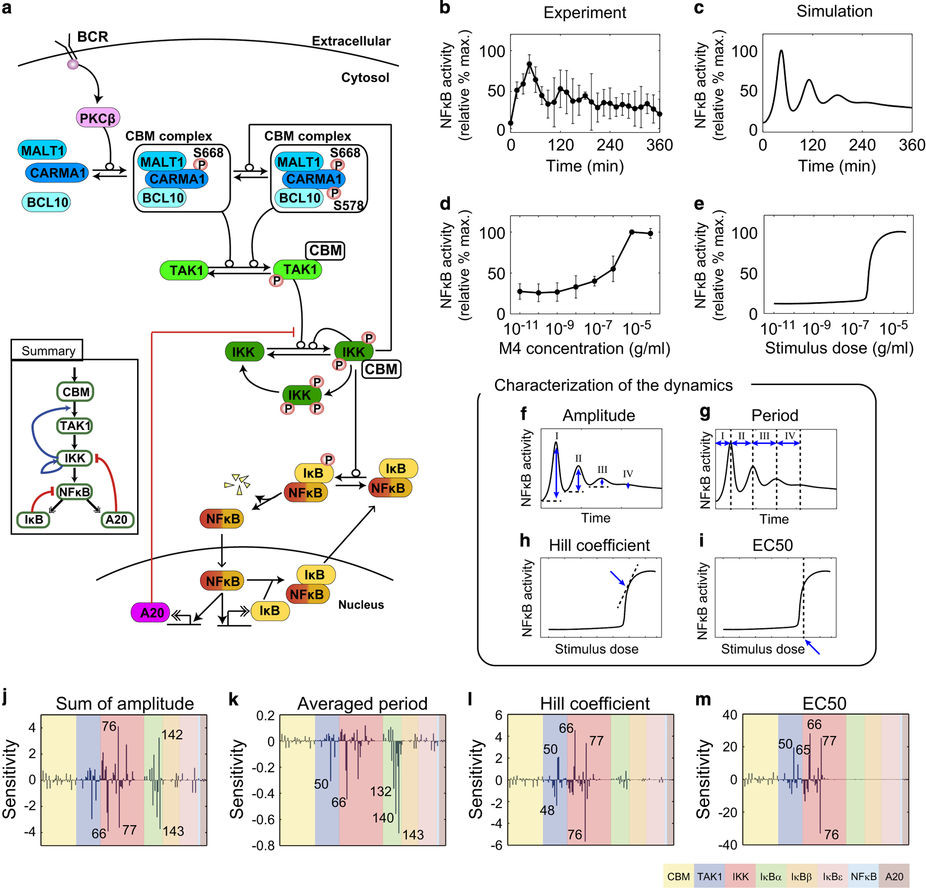振動動態がNF-κBのB細胞活性化に向けた機能転換を生じさせる
Oscillation dynamics underlie functional switching of NF-κB for B-cell activation
2016年10月20日 npj Systems Biology and Applications 2, Article number:16024 (2016) doi:10.1038/npjsba.2016.24
B細胞:フィードバックループが遺伝子調節因子の活性化を制御する

異なる複数のフィードバックループが、免疫B細胞の機能発現に重要な転写因子NF-κBの動態に影響を与えている。理化学研究所及び大阪大学の岡田眞里子教授率いるチームは、細胞の運命決定を担う遺伝子群の発現を制御する転写因子NF-κBの活性動態に注目し、B細胞受容体シグナル伝達の数学的モデルを構築した。同チームはNF-κBネットワークの数理モデルを用いて細胞実験を行い、モデルのテストおよび検証を行った。その結果、シグナルの調節因子であるIKKの正のフィードバックループにより、NF-κBのスイッチ様の活性が生じることが明らかになった。また、NF-κBは、負のフィードバックループにより、振動動態を引き起こし、標的遺伝子の発現誘導を行うことも明らかになった。これらの知見は、独立した各フィードバックループがどのように協働してB細胞の分化に関与する制御経路をコントロールするのかを示している。
B cells: Two feedback loops control gene regulator
Different feedback loops impact the dynamics of the transcription factor NF-κB in the development of B-cells of the immune system. A team led by Mariko Okada-Hatakeyama from RIKEN and Osaka University, Japan, constructed a mathematical model of B-cell receptor signaling with expression dynamics of NF-κB, a protein complex that regulates multiple genes involved in controlling cell fate. The researchers also conducted lab experiments with B-cells with modified NF-κB networks to test and validate their model. They showed that NF-κB is activated in a switch-like manner by positive feedback regulation of an upstream modulator called IKK. NF-κB levels then oscillate by negative feedback regulation to induce target genes. The findings show how different, independent feedback loops can operate together to control regulatory pathways involved in B cell differentiation.

